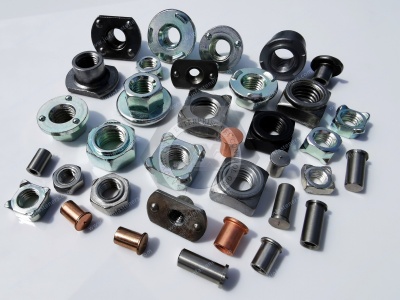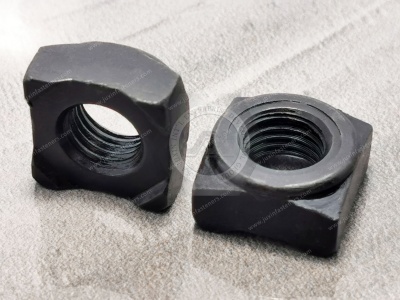Call Us
+86 136 6007 9809
Call Us
+86 136 6007 9809
Jun. 09, 2024
Methods for Bolt Welding on Vehicle Bodies
Bolt welding on vehicle bodies can be achieved through two methods: using self-tapping screws to secure through plasterboard or by welding. A bolt is a mechanical component with a cylindrical, threaded fastening part paired with a nut. Two parts can be separated by unscrewing the nut from the bolt, making bolt connections detachable. Based on the load-bearing mode, bolts are classified into joint bolts and bolts for reamed holes. Standard bolts mainly bear axial loads and can also handle minor transverse loads. Bolts are graded into several levels based on their structure, with bolts of grade 8.8 and above being made from heat-treated low-carbon alloys, known as high-strength bolts. Bolts below grade 8.8 are referred to as joint bolts, with high-strength bolts having superior performance to standard bolts.
1. Are You Using the Correct Weld Bolts and Nuts in Your Design?
Many parts in automotive design use sheet metal structures, making weld nuts widely used in the industry. Weld nuts are relatively less common in other sectors, where thicker steel plates can be designed to be directly tapped with internal threads. The extensive application of weld nuts in the automotive industry stems from this need.
2. Rational Application of Weld Nuts During Selection to Avoid Design Issues
Weld nuts come in various standards: weld square nuts, weld hex nuts, weld nuts for automotive seat belts, weld round nuts, weld hex flange lock nuts, weld hex flange nuts (weld flange nuts), and T-weld nuts. These standards include Q371B, Q370D, Q369, Q368, Q366, Q364, JIS B1196, ISO 21670, DIN 928, DIN 929, BS 7670, JIS B 1200, JIS B 1196 (T 1A/1B), JIS B 1196 (T 2A/2B), and JIS B 1196 (1C/1D).
When designing, it's crucial to note that some weld nut standards ensure load requirements that align with the corresponding grade nut's guaranteed load standards. For example, the joint weld square nut standard Q371B, such as the M10 weld nut specification, requires a guaranteed load of 44.8 kN, while the standard grade 8 nut requires a guaranteed load of 50.5 kN. Therefore, the standard for weld nuts lies between the guaranteed load of grade 6 and grade 8 nuts.
In the past, this was acceptable when torque tightening was mainly used. However, as the automotive industry increasingly adopts torque-angle tightening methods beyond the yield point, this can cause the bolt axial force to reach the minimum fracture load level, leading to thread damage during tightening even if paired with grade 8.8 bolts.
Strength Reduction After Welding: Welding nuts are cold-headed, which can lead to cold deformation strengthening. However, the heat input during welding can reduce the strength of the weld nut to some extent, making it challenging to meet the required guaranteed load after welding.
Flange Welding Nuts: With a larger contact surface, flange weld nuts can prevent crushing under torque-angle tightening or when the strength of the connected material is low. Thus, flange weld nuts are recommended. Flange weld nuts have three projection points, forming a plane that ensures better parallelism after welding than square weld nuts' four projection points. It's important to note that the height of flange weld nuts is approximately 1.3 times the nominal diameter of the thread, so bolt length adjustments may be necessary when switching from square to flange weld nuts.
For high-quality carbon steel flange welding nuts fasteners and professional technical support, don't hesitate to contact us at adelajonly@gmail.com or visit our website at [Juxin Fasteners]: https://www.juxinfasteners.com.


Bolt-Nut Matching: The design principle for bolt-nut matching is that the nut's strength must at least match the bolt's performance grade. Using higher-grade nuts with lower-grade bolts is acceptable to prevent thread stripping during assembly. For instance, an 8-grade nut can match a bolt with a maximum grade of 8.8.
All-Metal Lock Nuts: For designs using all-metal lock nuts, matching with bolts of the same grade is typically required. For instance, 10-grade all-metal lock nuts should not be used with 8.8-grade bolts.
Failure Modes in Bolt-Nut Connections: Bolt fractures occur suddenly and are easily detectable, while thread stripping on bolts and nuts can happen gradually and be less noticeable. In bolt-nut connections, we prefer the failure mode to be bolt fracture over thread stripping, ensuring that over-tightening leads to bolt fracture rather than thread failure.
Contact Us
Tel.:
+86 020 8621 0320
+86 020 3121 6067
Technical Support:
Navigation
SEND INQUIREY